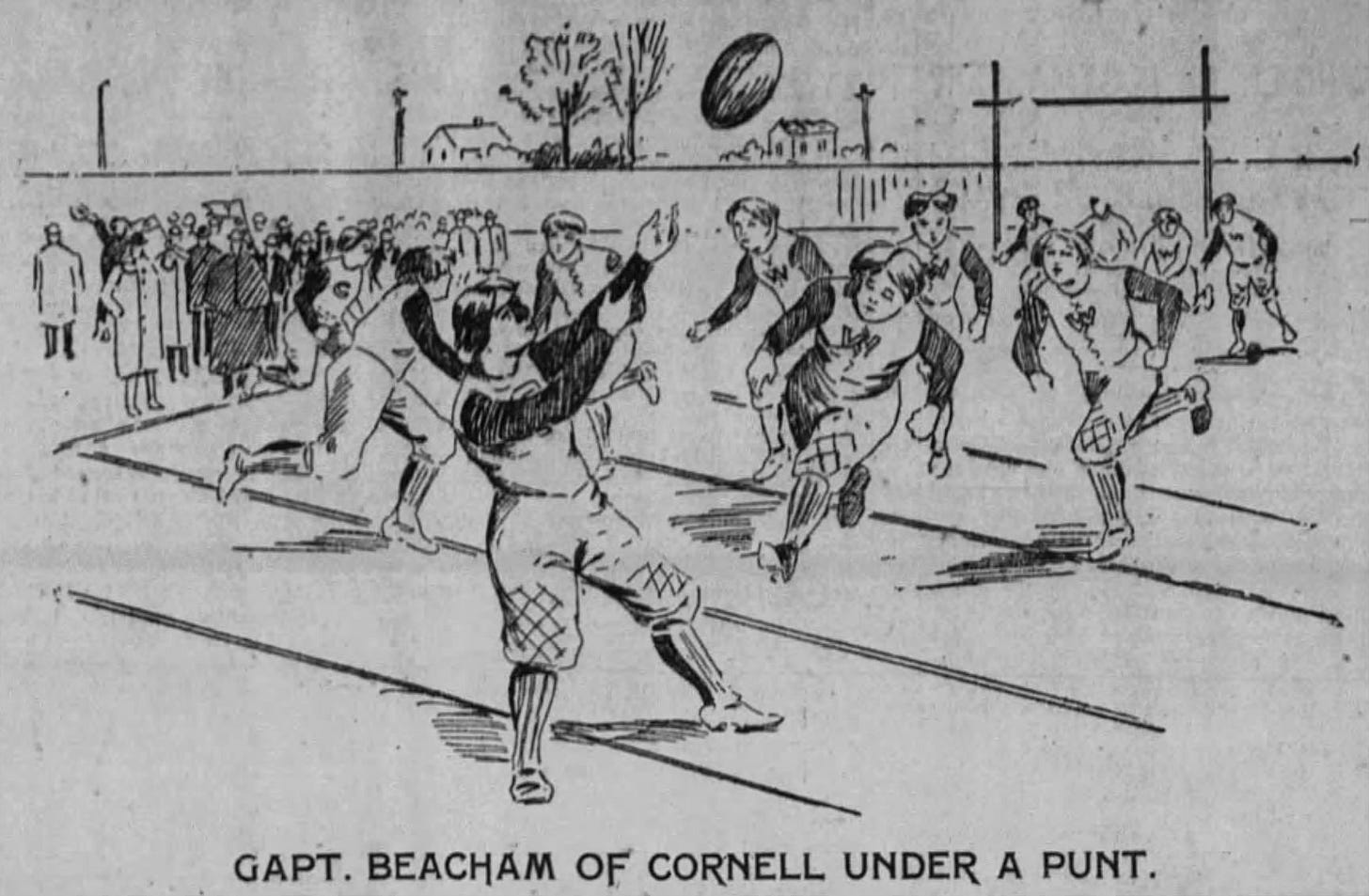Today's Tidbit… IFA Rule #28 Fair Catch
This is #28 in a series covering football's original 61 rules adopted by the Intercollegiate Football Association in 1876. We review one rule each Friday.
Only those catching punts or kickoffs can fair catch the ball today, but the fair catch applied to four other situations in early football. In addition, the fair catch signal differed from today and was often unclear, leading to a new signal and rule change.
Rule 28: A fair catch is a catch made direct from a kick or a throw forward, or a knock on by one of the opposite side, or from a punt-out or punt-on (see Rules 29 and 30), provided the catcher makes a mark with his heel at the spot where he made the catch and no other of his side touch the ball. (See Rules 43 and 44.)
Like today, a fair catch could occur on a punt or kickoff. As we saw last week when covering Rule 27, a fair catch applied when an opponent threw the ball forward or knocked it on. Besides those situations, a fair catch could occur on puntouts or punt-ons, defined by Rules 29 and 30, which we will cover in the next two weeks.
The original process did not require players to signal the fair catch until they were in the act of catching the ball. Then, during the catch, they were to dig the heel of a foot into the ground. So, the signal came late, and it was not always clear whether a player heeled in or merely stumbled about, leading opponents to hit the player as he caught the ball. The combination was dangerous and earned a penalty.
Besides acting as a signal, the heeling in process also marked the spot from which his team could take a free kick or run a play from scrimmage. That marking process may have made sense in moist ol' England, where the heel actually sunk into the ground, but it worked less well on America’s dry prairies and its southern climes.

The difficulty coverage players had to differentiate heeling in from stumbling led Walter Camp to suggest having players signal for a fair catch by raising a hand. Raising the hand, heeling in, or both came and went in the rules for several years until settling in on the raised arm. Raising and waving the hand from side to side at least once did not arrive until 1973.

Two amusing notes about the fair catch are that players before the mid-1890s typically wore skull or tasseled caps. To distract the punt returner, the punting team's coverage players often waved their tasseled hats as they approached the punt returner until the rule makers banned that technique in 1894.

Amusing note #2 concerns coaches and players consistently finding ways to violate the spirit of the rules by following only the letter of the law. The fair catch rule was no exception, and they used a trick similar to punt returners today running up to signal a fair catch as the ball sails past them and heads for the end zone. Early on, the rule's wording prohibited the player signaling for a fair catch from taking steps forward after heeling in. So return teams positioned two players deep in punting situations, one of whom signaled for a fair catch, causing the covering players to relax or slow down. Meanwhile, the other deep back, who did not signal for a fair catch, caught the ball and took off upfield. A 1907 rule ended that trick by applying the fair catch signal to all players on the return team, not only the player signaling for the fair catch.
Click the appropriate link for previous stories in the series: Intro | #1 Drop Kick | #2 Place Kick | #3 Punt | #4 Goal Posts | #5 Goal | #6 Goal ≠ Punt | #7 Scoring | #8 Dead Ball | #9 Touchdown | #10 Tackle | #11 Scrimmage | #12 Ball Handling | #13 Dead Ball | #14 Scrimmage Ball Handling | #15 Run In | #16 Goal Line | #17 Boundary Lines | #18 Crying “Down” | #19 Maul In | #20 Maul in Pax | #21 Touch-in Goal | #22 Onside | #23 Offside | #24 Return to Onside | #25 Defensive Offside | #26 Throwing Back | #27 Knocking On
Football Archaeology is reader-supported. Click here to buy one of my books or otherwise support the site.


"..direct kick or a throw forward.."
throw forward?